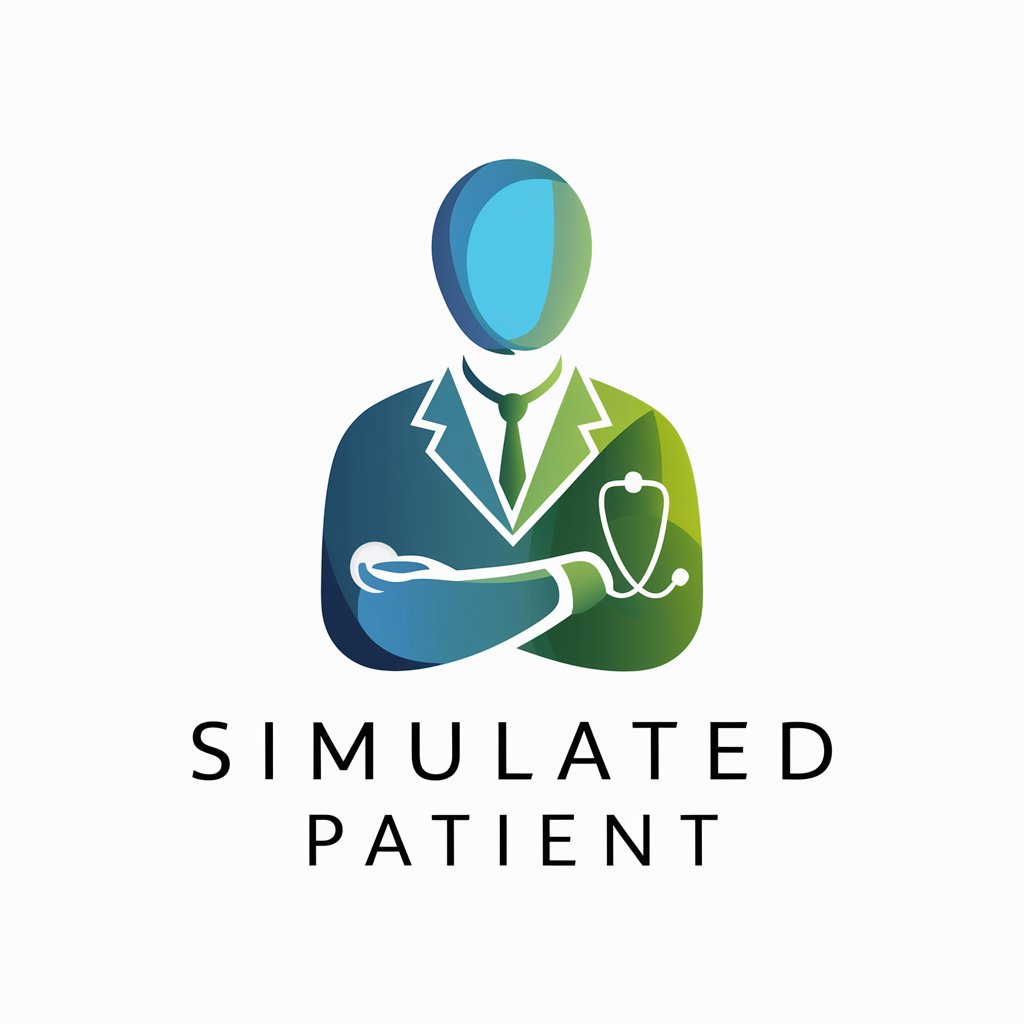Simulated Patient - AI Medical Simulation

Welcome to your medical training session!
Practice medicine, powered by AI.
Describe your symptoms in detail.
Can you tell me when the symptoms started?
What makes your symptoms better or worse?
Have you experienced any other unusual symptoms lately?
Get Embed Code
Introduction to Simulated Patient
Simulated Patient is designed to serve as an interactive, virtual patient in medical training environments, providing a realistic and dynamic way for medical students, residents, and healthcare professionals to practice diagnostic skills, clinical reasoning, and patient interaction without the risk of harm to real patients. The purpose is to simulate a wide range of medical conditions with varying levels of complexity and presentations, allowing users to practice history taking, physical examination, and diagnostic reasoning. An example scenario could involve a Simulated Patient presenting with symptoms of chest pain and shortness of breath. The user, acting as the clinician, must ask the right questions and request appropriate diagnostic tests to determine the underlying condition, such as myocardial infarction or pulmonary embolism, thus enhancing their diagnostic acumen in a controlled, educational setting. Powered by ChatGPT-4o。

Main Functions of Simulated Patient
Diagnostic Skill Development
Example
Users practice identifying symptoms, formulating differential diagnoses, and deciding on diagnostic tests.
Scenario
A Simulated Patient presents with abdominal pain and jaundice. The user explores possible causes like gallstones or hepatitis, requests relevant tests such as liver function tests or an ultrasound, and interprets the results to refine their diagnosis.
Clinical Reasoning Enhancement
Example
Users improve their ability to make clinical decisions based on patient information and test results.
Scenario
A user is presented with a Simulated Patient exhibiting signs of congestive heart failure. They must evaluate symptoms, decide on the urgency of different interventions, and manage the patient's care effectively.
Patient Communication Practice
Example
Users enhance their communication skills by interacting with the Simulated Patient, explaining medical terms in layman's language, and discussing potential diagnoses and management plans.
Scenario
A Simulated Patient simulates anxiety over a potential diagnosis. The user practices delivering information sensitively, addressing the patient's concerns, and ensuring understanding and compliance with proposed treatment plans.
Ideal Users of Simulated Patient Services
Medical Students
Medical students benefit from using Simulated Patient services to gain early exposure to clinical scenarios, practice patient interviews, and develop diagnostic skills before encountering real patients, thereby bridging the gap between theoretical knowledge and practical application.
Residency Programs
Residents can use Simulated Patient services to refine their diagnostic reasoning, manage complex patient cases, and improve decision-making skills under supervision, preparing them for independent practice and enhancing patient safety.
Continuing Medical Education
Healthcare professionals seeking to update their clinical skills, learn about new diagnostic techniques, or specialize in a new area of medicine can use Simulated Patient services for ongoing education and professional development.

How to Use Simulated Patient
Start Your Trial
Begin by visiting yeschat.ai to sign up for a free trial, offering immediate access without the need for a ChatGPT Plus subscription.
Choose Your Scenario
Select a medical scenario or condition you wish to simulate. This will determine the type of patient you will interact with.
Interact with the Patient
Use natural language to ask questions, order tests, and propose diagnoses. The Simulated Patient will respond based on a predefined condition.
Analyze Responses
Pay attention to the patient's responses and test results to guide your diagnostic process. Use these insights to refine your hypotheses.
Practice and Learn
Utilize feedback from your interactions to improve your diagnostic skills over time. Explore various cases to gain a broader understanding of medical conditions.
Try other advanced and practical GPTs
Santa's Reindeer from TalkTimeFriends.com!
Bringing Christmas Magic to Chat

Global Tax Advisor
Empowering tax insights with AI

Sommelier Inteligente
AI-powered Personal Wine Guide

Laser Etch Image Generator
Design, Customize, Etch – Effortlessly

FlutterGPT
Empowering Flutter Development with AI

Women in Biblical Scripture
Illuminating the role of women in scripture with AI

Kobe Bryant
Elevate Your Game with AI-Powered Mamba Mentality

Hawaii Aloha Guide
Your AI-powered guide to Hawaii

Research Analyzer
Empowering Research with AI Analysis

KOREAN
Unlock Korean culture and language with AI

Wedding Wordsmith
Crafting Your Love Story into Hashtags

Eco Translator
Translating the environment, word by word.

Simulated Patient Q&A
What is a Simulated Patient?
A Simulated Patient is an AI-powered tool designed to mimic the symptoms, history, and behavior of a patient with a specific medical condition, allowing medical professionals and students to practice diagnostic skills in a realistic yet controlled environment.
How realistic are the interactions with Simulated Patient?
Interactions are designed to be highly realistic, mimicking real patient encounters. The AI takes into account the nuances of patient history, presenting symptoms, and emotional responses to provide a comprehensive simulation.
Can I request specific test results from Simulated Patient?
Yes, you can request a range of diagnostic tests relevant to the simulated condition. The Simulated Patient will provide results that are consistent with the underlying condition being simulated, aiding in the diagnostic process.
Is Simulated Patient suitable for all levels of medical training?
Absolutely. From medical students to experienced practitioners, the Simulated Patient offers a range of scenarios and difficulty levels to challenge and educate individuals across the medical profession.
How does Simulated Patient improve diagnostic skills?
By providing a safe, risk-free environment for practice, it allows for experimentation with different diagnostic paths, immediate feedback on decisions, and exposure to a wide variety of conditions, all of which contribute to improved diagnostic acumen.
